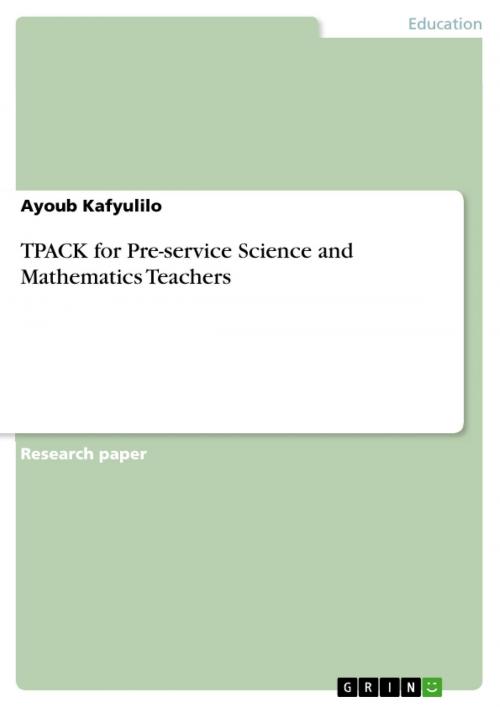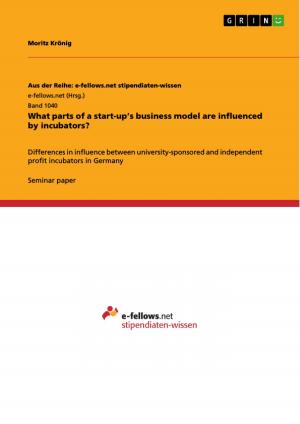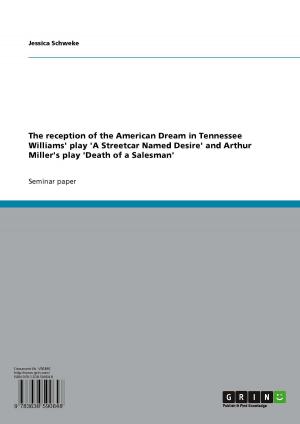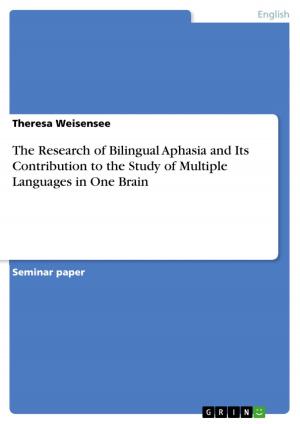TPACK for Pre-service Science and Mathematics Teachers
Nonfiction, Reference & Language, Education & Teaching, Teaching, Teaching Methods| Author: | Ayoub Kafyulilo | ISBN: | 9783656190486 |
| Publisher: | GRIN Publishing | Publication: | May 14, 2012 |
| Imprint: | GRIN Publishing | Language: | English |
| Author: | Ayoub Kafyulilo |
| ISBN: | 9783656190486 |
| Publisher: | GRIN Publishing |
| Publication: | May 14, 2012 |
| Imprint: | GRIN Publishing |
| Language: | English |
Research Paper (undergraduate) from the year 2010 in the subject Pedagogy - The Teacher, Educational Leadership, University of Twente , course: Education science, language: English, abstract: This article is focused on unveiling the concept of TPACK in relation to teaching and learning in science and mathematics as well as the meaning of TPACK for pre-service science and mathematics teachers training. In describing this, different literatures were consulted on the meaning of TPACK, its origin and the way it can be integrated in pre-service science and mathematics teacher preparation. It was noted from literature that TPACK is the core of good teaching with technology, and that it's important for teachers to have an understanding of TPACK. Studies further show that the way pre-service teachers are taught to integrate technology, pedagogy and content is the same way they can implement the approach in their own teaching. In addition, studies argue for pre-service teachers to learn on how technology can help to enhance students learning in science and mathematics rather than learning how to teach technology. Different frameworks have been proposed on how to shift from teaching technology to using technology to enhance learning. For example some studies provide the curricular plans for developing pre-service teachers' competencies of integrating technology pedagogy and content. To enhance pre-service teachers' competency in technology integrations, some studies have reported the need for pre-service science and mathematics teachers to engage in the hands-on activities that reflect the real teaching with technology. Example of hands activities proposed in most studies includes planning of a lesson, presenting it to peers, getting critics from peers and re-planning it again. The cyclic development of the lesson is reported to enhance pre-service teachers' competency in working with technology in a real classroom situation. It is therefore concluded that implementation of TPACK in pre-service teachers training should start with orientation of the pre-service teachers to the use of technology in teaching by providing them with sufficient opportunity to engage in hands-on activities.
Research Paper (undergraduate) from the year 2010 in the subject Pedagogy - The Teacher, Educational Leadership, University of Twente , course: Education science, language: English, abstract: This article is focused on unveiling the concept of TPACK in relation to teaching and learning in science and mathematics as well as the meaning of TPACK for pre-service science and mathematics teachers training. In describing this, different literatures were consulted on the meaning of TPACK, its origin and the way it can be integrated in pre-service science and mathematics teacher preparation. It was noted from literature that TPACK is the core of good teaching with technology, and that it's important for teachers to have an understanding of TPACK. Studies further show that the way pre-service teachers are taught to integrate technology, pedagogy and content is the same way they can implement the approach in their own teaching. In addition, studies argue for pre-service teachers to learn on how technology can help to enhance students learning in science and mathematics rather than learning how to teach technology. Different frameworks have been proposed on how to shift from teaching technology to using technology to enhance learning. For example some studies provide the curricular plans for developing pre-service teachers' competencies of integrating technology pedagogy and content. To enhance pre-service teachers' competency in technology integrations, some studies have reported the need for pre-service science and mathematics teachers to engage in the hands-on activities that reflect the real teaching with technology. Example of hands activities proposed in most studies includes planning of a lesson, presenting it to peers, getting critics from peers and re-planning it again. The cyclic development of the lesson is reported to enhance pre-service teachers' competency in working with technology in a real classroom situation. It is therefore concluded that implementation of TPACK in pre-service teachers training should start with orientation of the pre-service teachers to the use of technology in teaching by providing them with sufficient opportunity to engage in hands-on activities.















